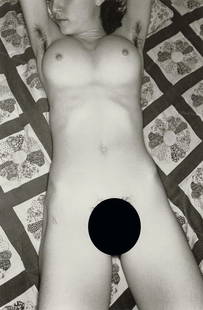
(4) Artist Proofs, Maxfield Parrish, 1920s
Similar Sale History
View More Items in PaintingsRelated Paintings
More Items in Paintings
View MoreRecommended Art
View More






Item Details
Description
Title: "The Arabian Nights"
Artist: Maxfield Parrish
Publisher: P F Colier & Son
Engraver: Unknown
Description: These artist proofs are all renditions of the Arabian Nights as envisioned by the artist Maxfield Parrish of "Daybreak" fame.
Date: 1920s
Frame: Board
Framed Size: 18.25x13.25"
Work Size: 11.25x8.88"
Weight: 1.0lbs
Condition: Very light foxing has spotted these proofs.
Provenance: Putnam County Estate
History: Born in Philadelphia, Pennsylvania, he was the son of painter and etcher Stephen Parrish. He began drawing for his own amusement as a child. His given name was Frederick Parrish but he later adopted the maiden name of his paternal grandmother, Maxfield, as his middle name, and later as his professional name. His father was an engraver and landscape artist, and young Parrish's parents encouraged his talent. He attended Haverford College, the Pennsylvania Academy of the Fine Arts, and Drexel Institute of Art, Science & Industry. He entered into an artistic career that lasted for more than half a century, and which helped shape the Golden Age of illustration and the future of American visual arts.The Dinky Bird, by Maxfield Parrish, an illustration from Poems of Childhood by Eugene Field, 1904. This work exemplifies Parrish's characteristic use of androgynous figures.He lived in Philadelphia until age 28, at which time he purchased land opposite the valley from his parents' home in New Hampshire, where over a number of years he designed and built his own home and eventual studio, The Oaks. He spent the rest of his life there with his wife, Lydia, who died in 1953, and his mistress and model, Sue Lewin, who survived his death in 1966 at age 95.Launched by a commission to illustrate L. Frank Baum's Mother Goose in Prose in 1897, his repertoire included many prestigious projects, among which were Eugene Field's Poems of Childhood in 1904 (8 color plates; see illustration) and such traditional works as Arabian Nights in 1909 (12 color plates). Books illustrated by Parrish, in addition to those that include reproductions of Parrish's work—including A Wonder Book and Tanglewood Tales in 1910 (10 color plates), The Golden Treasury of Songs and Lyrics in 1911 ( 8 color plates) and The Knave of Hearts in 1925 (with 23 color images)—are highly sought-after collectors' items.The Lantern Bearers, 1908, oil on canvas on board, created for Collier's magazine, the painting shows Parrish's use of glazes and saturated color in an evocative night scene, Crystal Bridges Museum of American ArtHe had numerous commissions from popular magazines in the 1910s and 1920s, including Hearst's, Colliers, and Life. He was also a favorite of advertisers, including Wanamaker's, Edison-Mazda Lamps, Fisk Tires, Colgate and Oneida Cutlery. In the 1920s, Parrish turned away from illustration and concentrated on painting for its own sake. Androgynous nudes in fantastical settings were a recurring theme. He continued in this vein for several years, living comfortably off the royalties brought in by the production of posters and calendars featuring his works. An early favorite model was Kitty Owen in the 1920s. Later another favorite, Susan Lewin, posed for many works, and was employed in the Parrish household for many years. Parrish posed for many images that featured male—and occasionally female—figures.In 1931, he declared to the Associated Press, "I'm done with girls on rocks", and opted instead to focus on landscapes. Though never as popular as his earlier works, he profited from them. He would often build models of the landscapes he wished to paint, using various lighting setups before deciding on a preferred view, which he would photograph as a basis for the painting (see for example, The Millpond). He lived in Plainfield, New Hampshire, near the Cornish Art Colony, and painted until he was 91 years old. He was also an avid machinist. He often referred to himself as "a mechanic who loved to paint."Parrish was one of the most successful and prolific of the illustrators and painters of the Golden Age of Illustration. He was earning over $100,000 per year by 1910, at a time when a fine home could be purchased for $2,000. Norman Rockwell referred to Parrish as "my idol." Parrish, although unique in his execution and never duplicated, exhibited considerable influence upon other illustrators and artists, an influence which continues through the present. His original paintings are highly sought-after when they come to market, as well as his first-edition prints, which continue to command high prices at both auction and through private sales. His exacting attention to detail preceded the Photorealist and Hyper-Realist art movements, and his abundant imagination and love of fantasy elements have also influenced artists in myriad media.
Buyer's Premium
- 24.5%
(4) Artist Proofs, Maxfield Parrish, 1920s
Estimate $200 - $400
5 bidders are watching this item.
Shipping & Pickup Options
Item located in Garrison, NY, usSee Policy for Shipping
Payment

Related Searches
TOP






































































